#MRI images
Explore tagged Tumblr posts
Text
We ask your questions so you don’t have to! Submit your questions to have them posted anonymously as polls.
#polls#incognito polls#anonymous#tumblr polls#tumblr users#questions#polls about health#submitted june 14#mris#mri#imaging#diagnostics#radiology#medical
719 notes
·
View notes
Text
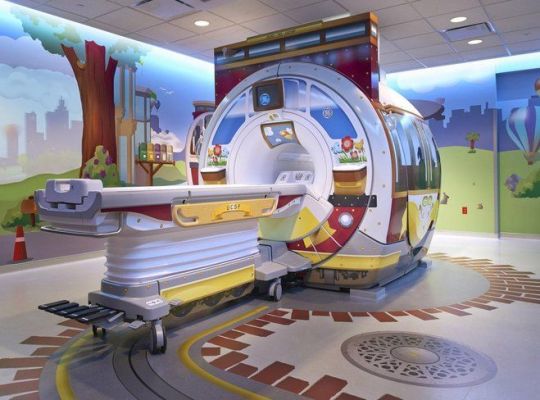
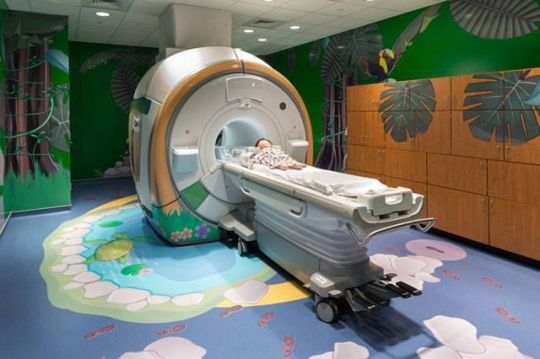

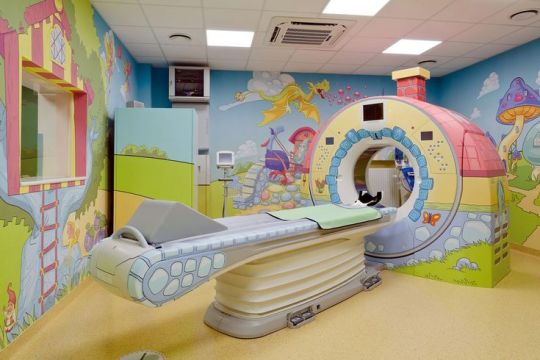

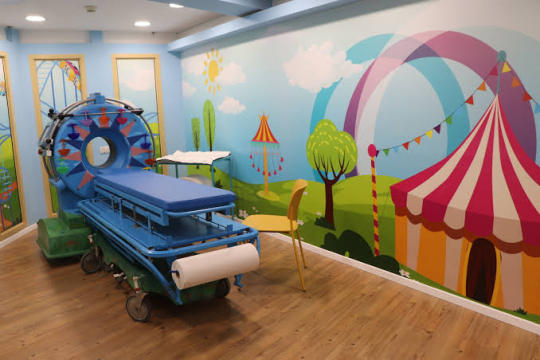


Decorative children's MRI machines
#op#photos#medcore#medicalcore#hospitalcore#mri scan#mri machines#imaging#medical equipment#pediatric#colorful#i think there's a couple of pet/ct scans here but idk which one
96 notes
·
View notes
Text
By popular (???) request, based on the outcome of this poll.
A WARNING: you guys really did pick the most complex one. This is loooooong. A DISCLAIMER. This is a silly little lesson aimed at folks who know sod-all about MRI. There are memes. There is (arguably) overuse of the term ‘big chungus’. If you are looking to delve deeper into the mysteries of K-Space, this is not the Tumblr post for you.
So, without further ado...
Today I am introducing you to my one true love. The legend. The icon.
Ferromagnetic material loves him. Claustrophobic people fear him.
Yeah, that’s right – we’re talking about the big boom-boom sexyboy magnet machine, hereby known as Big Chungus.

Aka...
MAGNETIC RESONANCE IMAGING
First off, though? Let’s start small.
Very, very small.
Meet HYDROGEN.

The nucleus of this element is made up of a single proton, which has a magnetic dipole – i.e., it acts like a tiny bar magnet.
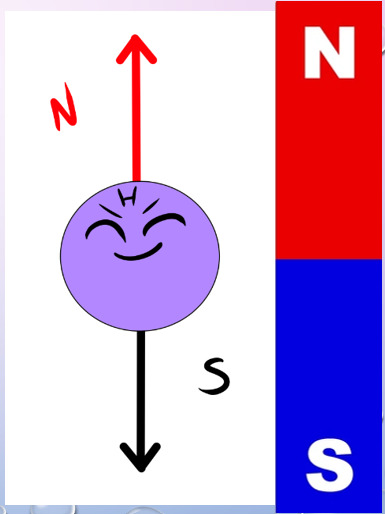
Hydrogen is also a component of water. As we all know, we’re basically walking sacks of goop – meaning that Hydrogen is abundant throughout our bodies.
Therefore, when we stick you in a strong magnetic field… say, within our friend Big Chungus… we can manipulate all those tiny Hydrogen atoms in a variety of fun ways.


Under normal conditions, all your Hydrogen protons are pointing every-which-way.
But in Big Chungus, there is a strong longitudinal magnetic field that travels along the Z-axis of the machine. So, all your teeny tiny Hydrogen protons swivel to align with that field!
If a proton’s energy is LOWER than that of the longitudinal magnetic field (a majority), they will align PARALLEL with the field. If their energy is HIGHER (a minority) they will align ANTI-PARALLEL.
As most of the protons align with the longitudinal magnetic field, the net magnetisation vector within the human body is also longitudinal! This is called the thermodynamic equilibrium – the resting state for all those li’l protons when your body is within Big Chungus.
(You won’t feel any different, btw! We’re flipping a bunch of teeny-tiny bits inside you, but you won’t feel a thing!) (You might do later, when we activate the Gradient coils. We’ll….. get to that)
But, while all of this is very cool, it gives us no actual information. We gotta play some more with your protons - which brings us to arguably the most important concept in MRI. I mean, it’s literally in the name!

Let’s go back to our Hydrogen protons.

We’ve established that they’re all pointing in different directions. But they’re not just sitting still. They’re spinning and wobbling all over the shop.
We call this rotational wobbly movement precession.
In their natural state, these protons all precess at different speeds. When we subject them to Big Chungus, as well as all lining up neatly with the magnetic field, they all start to precess at the same speed.
However, their magnetic North will be pointing to different points at any given moment. Imagine two clocks, both of which are ticking at the same rate, but which have been set to read different times.
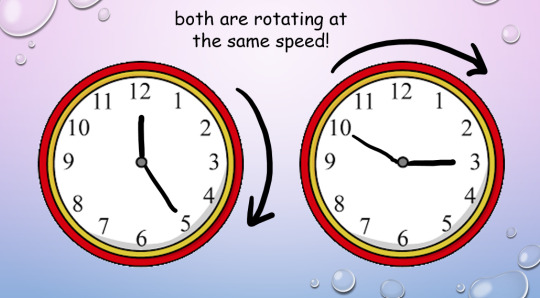
This is where magnetic resonance comes in.
In addition to the homogenous longitudinal magnetic field provided by Big Chungus, we also create an oscillating magnetic field in the transverse plane by using a radiofrequency (RF) pulse. We can tune that oscillation to the ‘resonant frequency’ of Hydrogen atoms.
Every molecule capable of resonance has its own specific frequency. We use a funky equation called the Larmor Equation to work this out, or, as I like to call it, W, BOY!!!
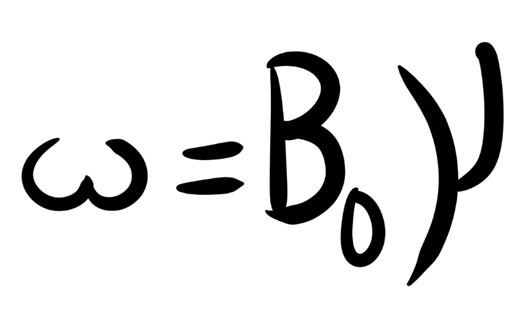
(The weird ‘w’ is the resonance frequency; the weird ‘Bo’ is the magnetic field strength, and the weird ‘Y’ is the gyromagnetic ratio of each particular element.)
So, we know exactly at what frequency to apply that RF pulse to your protons, to achieve resonance!
But what is resonance?
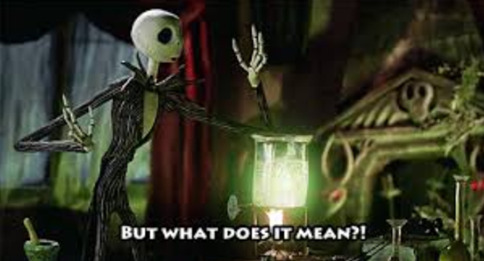
In acoustics, a ‘resonant frequency’ is the frequency an external wave needs to be applied at in order to create the maximum amplitude of vibrations within the object. Like when opera singers shatter glass with their voice! They’re singing at the resonant frequency of the glass, which makes it vibrate to the point where it compromises its structural integrity.
A similar concept applies in magnetic precession, with, uh, less destructive results. We’re not exploding anything inside of you, don’t worry!
(We do explode your innards accidentally in Ultrasound sometimes, via a different mechanism. But you’ll have to ask me more about that later. >:3)
To put it simply, magnetic resonance is the final step in getting those protons to BEHAVE. Now, the clocks have been corrected so their hands move at exactly the same time, in the same position. The protons are precessing ‘in phase’. Yay!
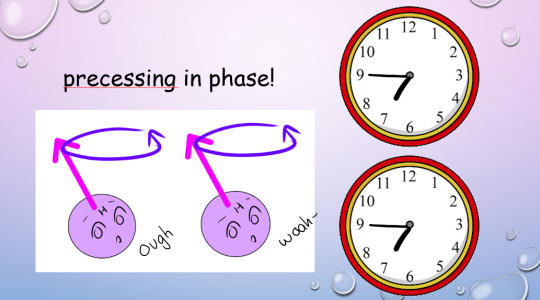
This creates transverse magnetisation, as the magnetic vectors of all those protons (which, remember, act as bar magnets) will swing around to point in one direction at the same time.
But the cool thing about resonance? It also allows the protons to absorb energy from the RF pulse.
(Do NOT ask me how. Do NOT. I will cry.)
And remember how the higher-energy protons flip anti-parallel to the longitudinal magnetic vector of Big Chungus, while the lower-energy protons are aligned parallel? And because we have more low-energy protons than high-energy protons, our body gains a longitudinal magnetic vector to match Big Chungus?
Zapping those protons at their resonant frequency gives 'em energy (a process known as ‘excitation’, which I love, because I get to imagine them putting little party hats on and having a rave).
So, loads of them flip anti-parallel! Enough to cancel out the net longitudinal magnetic vector of our bodies – despite the best efforts of good ol’ Chungus!
(Keep trying, Chungus. We love you.)

Our protons are as far from our happy equilibrium as they can possibly be. We’ve lost longitudinal magnetisation, and gained transverse magnetisation. Oh noooo however can we fix this ohhhh noooooo
Simple. We turn off the RF pulse.
Everything returns to that sweet, sweet thermodynamic equilibrium.
Longitudinal magnetisation is regained. I.e., the protons realign with Big Chungus’s longitudinal magnetic field, with the majority aligned parallel rather than anti-parallel.
This is called SPIN-LATTICE RELAXATION.
‘T1 time’ is the point by which 63% of longitudinal magnetisation has been regained after application of the RF pulse. A T1-weighted image shows the difference between T1 relaxation times of different tissues.
And, without that oscillating RF pulse, we lose resonance – the protons fall out of phase randomly, due to the delightful unpredictable nature of entropy, and Transverse magnetisation reduces.
This is called SPIN-SPIN RELAXATION.
Or, if we’re feeling dramatic…

‘T2 time’ is the point by which 37% of the transverse magnetisation has been lost. A T2-weighted image shows the difference between T2 relaxation times of different tissues.
(Spin-spin is objectively a hilarious phrase to say in full seriousness when surrounded by important physics-y people. However, a word to the wise: do not make a moon-moon joke. They are not on Tumblr (present company excluded). They will not understand. You will get strange looks.)

But remember how resonance lets our protons shlorp up that sweet, sweet energy from the RF pulse? Well, in order to get back to thermodynamic equilibrium and line up with Big Chungus again, they have to splort that energy back out.
This is why we stick a cage over the body part we’re imaging. That cage isn’t a magnet, or a way of keeping you still – it’s a receiver coil.
It picks up the RF signal that’s given off by your innards as they relax from the intense work-out we just put them through. How cool is that??

The amount of time we wait between applying the RF pulse and measuring the ‘echo’ from within your body is called the ‘ECHO TIME’, or ‘TE’ (because we didn’t want to call it ET).
(yes, we’re cowards. Sorry.)
We also have ‘REPETITION TIME’ or ‘TR’ – the amount of time we leave between RF pulses! This determines how much longitudinal magnetisation can recover between each pulse.

By manipulating TE and TR, we can alter the contrast (i.e., the blacks and whites) on our image.
Areas of high received signal (hyperintense) are shown as white, while areas of low received signal (hypointense) are shown as black. Different sorts of tissue will have different ratios of Hydrogen-to-other-shit, and different densities of Hydrogen-and-other-shit – ergo, some tissue blasts out all of its stored energy SUPER QUICK. Others give it off slower.
A T1-weighted image has a short TR and TE time.
Fat realigns its longitudinal magnetisation with Big Chungus SUPER QUICK. This means, on a T1-weighted image, it looks hyperintense. However, water realigns its longitudinal magnetisation with Big Chungus slooooowly. Therefore, on a T1-weighted image, fluid looks hypointense! Ya see?
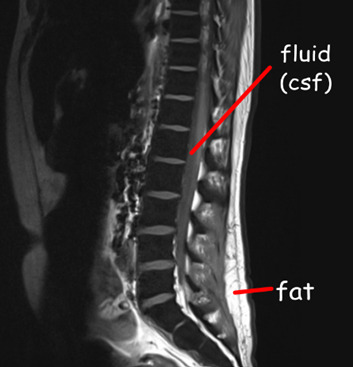
A T2-weighted image has a long TR and TE time.
The precession of protons in fat decays relatively slow, so it will look quite bright on a T2-scan. But water decays slower, and therefore, by the time we take the T2 image, fluids within the body will be giving off comparatively ‘more’ signal than fat – meaning they’ll appear more hyperintense!

If we have a substance with intrinsically long T1 and T2 values, it will appear dark on a T1-weighted image and bright on a T2-weighted image, and the same in reverse. If a substance has a short T1 value and a long T2 value, it will appear relatively ‘bright’ on both T1 and T2-weighted images – i.e., fat and intervertebral discs.
As every tissue has its own distinct T1 and T2 property… we can work out precisely what sort of tissue we’re looking at.
When we build in all our additional sequences, this becomes even clearer! This is why your MRI scan takes sooooo long – we’re running SO MANY sequences, manipulating TR and TE to determine the exact T1 and T2 properties of various tissues within your bod.


There is, however, a problem.
The RF signal given off by each proton doesn’t shoot out in a handy-dandy straight line. Meaning, we have no idea where the signal is coming from within your body.
Enter our lord and saviour:
THE GRADIENT COILS.

(Shim coils are also very important – they maintain field homogeneity across the whole of Big Chungus. While Big Chungus wouldn’t need them in a perfect theoretical scenario… reality ain’t that. Big Chungus’s magnetic field is all wibbly-wobbly, so we use Shims to keep everything smooth! That’s all you need to know about them. BACK TO THE GRADIENTS.)
There are three of them, wrapping around each of the three planes of your body. When these activate, they cause those epicly eerie booming noises, characteristic of a Big Chungus ExperienceTM.
youtube
The Gradient coils are also what causes those weird tingling sensations you get in an MRI machine – which, don’t worry, aren’t permanent! Your nerves just go ‘WOAHG. THASSALOT OF MAGNET SHIT. HM. DON’T LIKE THAT.’ But they’ll calm down again once you’re freed from Big Chungus.
The gradient coils cause constant fluctuations in the magnetic field across all three dimensions. They activate sequentially, isolating one chunk of your body after the next.
As these fluctuations cause variation within the signal received, we can look at how much THAT particular signal, received at THAT particular number of milliseconds after an RF pulse, varied when THAT particular gradient was activated, in comparison to when THAT OTHER gradient was activated.
For every single bit of signal output.
That gives us A WHOLE LOTTA DATA.

^ imagine this, but the cupboard contents is just. data.
Way too much data, in fact, for our puny human brains to comprehend – so obviously, we feed it to an algorithm.
K-space is a funky computational matrix where all this info gets compiled during data acquisition. Once we’ve finished the scan sequence and have all that yummy raw data, it can be mathematically processed to create a final image!
Just like that. Simple, right?
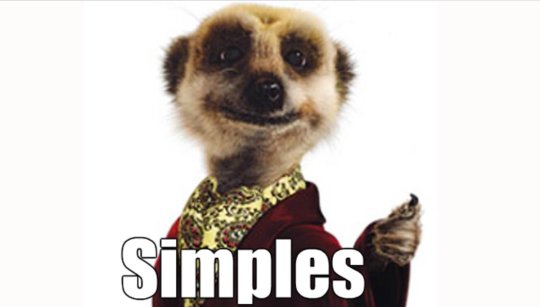
TL;DR
You are full of Hydrogen.
Hydrogen nuclei (protons) are basically tiny magnets
These tiny magnets are orientated completely randomly, with ‘North’ pointing in all directions
We stick billions of these tiny magnets (i.e., you) into a mahoosive magnet (i.e., Big Chungus)
All the tiny magnets flip around to align with the longitudinal magnetic field of Big Chungus
High energy protons = antiparallel Low energy protons = parallel
As you have more low energy protons than high energy protons in your body, the net magnetic vector of your body is longitudinal – just like Big Chungus!
All your protons are spinning and wobbling (precessing) at random rates
We use an RF pulse, tuned to the Resonance Frequency of Hydrogen, to make ‘em precess in phase (wobble at the same time, all pointing in the same direction at once). This creates a Transverse magnetic vector.
This in-phase precession is ‘Magnetic Resonance’
Magnetic Resonance means the protons can absorb energy from the RF pulse
Now there are more high energy protons within your body! They flip antiparallel, and the net longitudinal magnetic vector of your body decreases.
We measure the time it takes for the high-energy protons to release that energy and return to alignment with the net magnetic vector of Big Chungus (Spin-Lattice Relaxation / T1 recovery)
And the time it takes for the precessing-in-phase protons to Quit That Nonsense and all start wobbling in random directions again (Spin-Spin Decay / T2 recovery)
Each tissue within your body has a different composition & density of Hydrogen atoms – which means each tissue within your body has a unique T1 & T2 recovery time
By measuring the signal at different times (TE) and by varying the frequency with which we apply RF pulses (TR), we ‘take pictures’ that show variations in the amount of signal these tissues are giving off. The signal is caught by the large radiofrequency receiver coils we put over you when you enter the machine.
Because the signal given off during recovery/decay blasts out in all directions, we don’t know exactly where it originated within your body.
Gradient coils are arranged across X, Y, and Z axes throughout the gantry of Big Chungus. They cause tiny fluctuations in the magnetic field, in sequential chunks throughout space. This is the booming noise you hear when you’re in the machine.
These tiny fluctuations cause variations in the signal we receive, depending on how close the signal is to the activated gradient coil. All this data is compiled in a magical computational matrix called K-space. A funky algorithm then decodes those variations and couples them up with the strength of the signal to give us 1) How much signal is being blasted out at that particular moment 2) Where exactly that signal comes from within your body, according to the 3D map produced by the gradient coils
It then represents these values with a pretty picture!
Tl;dr tl;dr:

65 notes
·
View notes
Text
why do they play music for you in the mri if they never play it loud enough to be heard over the beeping and banging???
20 notes
·
View notes
Note
What do you think? How often do some shitty people just film Eddie and Steve when they’re in public and put it up on tik tok and what exactly do they film? Like what can you catch Steve and Eddie do in public the most?
I think that definitely happens.
Most of the time, they get filmed in common places like the grocery store or in a restaurant. Sometimes Eddie or Steve will clock that someone is filming them, sometimes they don’t and you get videos of them on a cute little date at the park or arguing over tomatoes at the famer’s market.
And yeah, it definitely sucks to be filmed without your knowledge, but it really becomes a problem when it’s more personal moments.
Someone catches on film a moment where Steve and Eddie are clearly fighting and posts it online for people to speculate if they’re going to divorce. Someone else puts up a video of Steve helping Eddie through a panic attack. There’s a video of Steve telling Eddie that he’s about to have a seizure and the only reason the video cut off there was because Nancy was with them and she threatened the guy filming them.
Someone films Steve and Eddie in the waiting room at the neurologist.
It’s just an appointment to go over the results of Steve’s MRI, but he also knows from his My Chart that the results are ‘abnormal’ and Steve thought that he was fine with that. He thought that he learned to expect the worst, that no one made it out of the Upside Down unscathed and this was just how it was for him, and he thought that he was fine with that, but something just kind of breaks inside of him when he’s sitting in the waiting room.
He's hunched over with his elbows on his knees and his hands over his eyes, and he can’t stop sniffling because he can’t stop crying because he’s – he’s probably dying. They’re going to tell him that he’s going to die. Eddie’s beside him, rubbing his shoulder, rubbing his back. Then Eddie is in front of him, crouching down and sweeping the hair out of his eyes, saying, “Baby, what’s wrong?”
“I’m not ready,” Steve whispers like a sob. “I’m not ready to go. I don’t want to leave you.”
Eddie tries to tell Steve that he shouldn’t speculate before they speak to the doctor but Steve’s beside himself. So Eddie does his best in the small confines of the waiting room to comfort him until the doctor calls them back to tell them that they believe that Steve’s abnormal results were a product of a faulty machine and would like to schedule another scan.
Then some asshole posts this entire moment between them on the internet.
#nothing sadder than Steve thinking that he was always going to die young and realizing that he doesn’t want to#I don’t know how an mri works other than my mom got one and they were like these images are unclear your tumor either shrunk or grew#steve harrington#eddie munson#eddie munson tiktok saga
772 notes
·
View notes
Text

Scan Do Attitude
Being able to monitor brain changes in mild cognitive impairment or Alzheimer's disease at point-of-care is desirable but, because of their necessarily lower magnetic field strength, portable MRI scanners have resolution limitations due to a lower signal-to-noise ratio. Here, combination with a machine learning pipeline overcomes disadvantages and renders the portable system more freely available and cost-effective
Read the published research article here
Selection from an image from work by Annabel J. Sorby-Adams and colleagues
Department of Neurology, Massachusetts General Hospital and Harvard Medical School, Boston, MA, USA
Image originally published with a Creative Commons Attribution – NonCommercial – NoDerivs (CC BY-NC-ND 4.0)
Published in Nature Communications, December 2024
You can also follow BPoD on Instagram, Twitter and Facebook
#science#biomedicine#biology#brain#neuroscience#neurodegeneration#alzheimer's#mri#brain scan#medical imaging
11 notes
·
View notes
Text
Also just got done with my second (2nd) MRI and found out it’s not NEARLY as expensive as I thought it’d be!! HALLELUJAH
#Shima speaks#I thought for SURE it was gonna cost me at least over 1k#The girl at the front desk was like. Oh yeah no estimated cost is like 200 something.#Me: ONLY TWO HUNDY?????#I have no idea what the first one cost tho and that was at a different place so 😬#BUT THIS PLACE AT LEAST. THEY AREN'T ACTIVELY TRYING TO BANKRUPT ME INTO THE GROUND.#Anyway I find out in like 2 days what's going on#(That's when my follow up appt is too so my doc will actually show me the MRI images and explain in Doctor Speak)#And then I can finally fix my fucking spine. And I can finally SIT in a CHAIR for more than two hours without wanting to DIE#And I can DRAW.#PLEASE. I WANT to draw. I WANT TO DRAWWWW
56 notes
·
View notes
Text
Guess who's over and done with the MRI? I am! It was torture. I wish I didn't have to drink the stinky water. I'm so sick from it. I get my results in like 3 days. Wish me luck.
-Amber (she/they/it/star/shine/rot)
#disability#disabled#actually disabled#chronic illness#chronically ill#ibd#inflammatoryboweldisease#inflammatory bowel disease#mri#magnetic resonance imaging
11 notes
·
View notes
Text
The biggest mystery in the XMCU isn't how Darwin managed to die in First Class, but how Wolverine survived being put in what is essentially a big, magnetic tube without his skeleton getting ripped from his body.
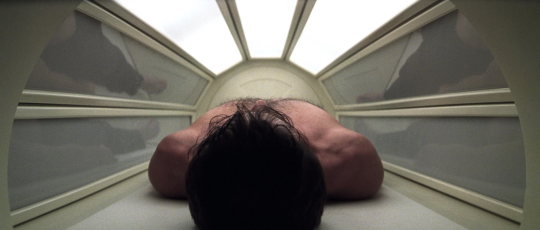
#wolverine#xmen#x men movies#hugh jackman#mri#Mris are just giant magnets#magnetic resonance imaging#Marvel explain#Is it a magic mri machine?#How did the machine not explode?#You can't have metal in an MRI#i'm loosing my mind
18 notes
·
View notes
Text
Not really whump
I gotta get a brain scan soon, hopefully they’ll find one in there.
#it’s for migraines#I’ve had CTs before#if anyone wants me to talk about what certain imaging feels like (mri/Ct) or surgeries and stuff I can#nw
17 notes
·
View notes
Text

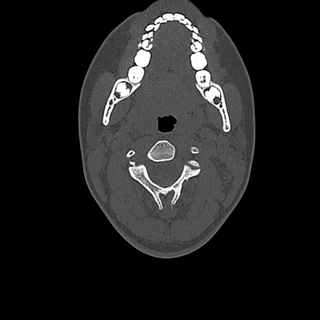




[ID: 6 GIFs of MRI scans. GIF 1: A bottom to top scan of the brain and tissue. GIF 2: A bottom to top scan of the bone. GIF 3: A slower bottom to top scan of the brain and tissue. GIF 4: A front to back scan of the brain and tissue. GIF 5: A left to right scan of the brain and tissue. GIF 6: A scan of a skull rotating on a vertical axis. End ID]
mri scans :•]
my video, credit this post if you use elsewhere!
#tw medical#stim#stimblr#stimmy#medical#medical stim#mri scan#medical imaging#also the image ids were made with my limited medical knowledge but slight understanding of what i'm looking at;#so my apologies for the ''unprofessional'' terms and possibly incorrect descriptions of the scans '^_^#scopo gifs
97 notes
·
View notes
Text
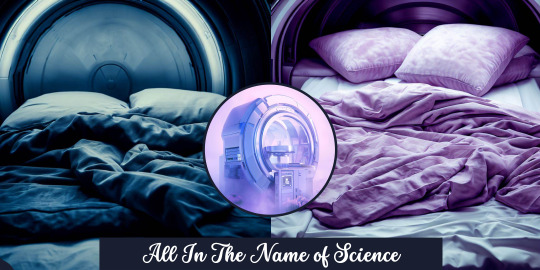
Another ✨ coming soon ✨ announcement because I'm very productive these days!!!
– All In The Name of Science –
Summary
Science is supposed to be objective and clinical with data and beakers and clipboards. Never in a million years did James imagine it could be like this.
Snippet One
“You want me to what?” James splutters, sure he’s misheard as he stares wide-eyed at his childhood friend, the unrequited love of his life, and currently, the woman asking him to be her fake boyfriend so they can join a research study on the female orgasm – and yes, apparently he’ll have to give her one.
Snippet Two
“You can touch yourself if you want,” Lily says and he nearly chokes. “Dora said it's okay as long as you don't touch me - okay for the research I mean.” Right. The fucking science.
#all in the name of science#I just wanna staaayyyyy#in that lavender haaaze#athenasparrow#athena's snippet#in case anyone is wondering#it's is a futuristic MRI machine on the banner#no it doesn't exist in real life#only in my brain#and now in an image#yes I know they'll be moving#I'm the author and when I throw physics out the window - that is where it stays 😂😂😂#jily smut
48 notes
·
View notes
Text
every single time I’ve had an mri they’ve had vastly different levels of chill about metal in the room
#today they grabbed my (wooden!) cane out of my hand#last time they told me it was fine to wear my mask with metal in it into the machine#and it was#other times have been more in the middle#mri#disabled#disability#chronic illness#chronically ill#magnetic resonance imaging
12 notes
·
View notes
Text
i wish that one class i took was about learning things instead of looking at various large tubes for multiple hours
#my profs favorite activity is showing us pictures of mri/pet/spect/ct scanners and then gleefully telling us that we're wrong#after we incorrectly guess which imaging modality it is. my brother in christ it is a Tube.#at least you can see the helium feed for an mri usually#but then it might be combined mri/pet or something so you're still WRONG#at least someone enjoyed the class i guess
10 notes
·
View notes
Text
got a good grade in 'not having something wrong with my brain that opticians can detect' and also in 'buying bananas' (not from the optician) 👍
#me @ neurologists you wanna put me in an mri machine soooooo bad... you wanna look at images of my brain sooo much....#it won't cost you sooooo much money it'll be sooooooo great and fun and wonderful for all of us i prommy 🥺 (<- lying)#anyway. also got some goop for my eyes 👍 and did i mention the bananas. non-messed-up pancake coming my way hopefully wahoooooooo!#LOVE to be ill and not be able to get one million tests done. mris should be free and you should just be able to be like 'hey i gotta brain#problem can u check real quick to see if there's anything messed up in there. okay? cool thanks i'll be there tomorrow'#and then we all live happily ever after. i don't wanna trial and error for one million years i wanna do all the tests FIRST and THEN#try stuff. sorry.#anyway. i'm so patient and also patient.#however AM really grateful for my optician. extremely thorough and patient and explanatory. best dr for real.#and also for real i'm also grateful for my gp and also for her consulting a neurologist for me. and i'll be grateful for the trial and#error too. i just wish it was easier for all of us. if 'money' wasn't a thing life could be a dream.
9 notes
·
View notes
Text

Next Generation Images
A new 7 Tesla ultra-high resolution MRI scanner takes human neuroscience imaging to the next level
Read the published research article here
Erwin Hahn 7T MRI Laboratory, Henry H. Wheeler Brain Imaging Center, Helen Wills Neuroscience Institute, University of California, Berkeley, Berkeley, CA, USA
Image originally published with a Creative Commons Attribution 4.0 International (CC BY 4.0)
Published in Nature Methods, November 2023
You can also follow BPoD on Instagram, Twitter and Facebook
#science#biomedicine#neuroscience#biology#mri scan#mri#magnetic resonance imaging#medical imaging#next generation#brains#brain scan
8 notes
·
View notes